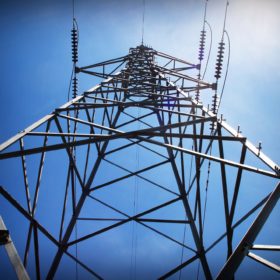
Germany’s Fraunhofer IEE uses weather data relevant for transmission line limits. Two new algorithms have been developed to identify local hotspots and better benefit from over-network use.
Paying closer attention to the weather could slash grid operation costs, according to researchers from Germany’s Fraunhofer Institute for Energy Economics and Energy System Technology (IEE).
The institute’s Jan Dobschinski has presented findings by an IEE team in Berlin which suggested monitoring ambient temperature, wind speed and other metrics could enable grid operators to more precisely use their maximum transmission capacity. Cold and windy conditions enable grid operators to raise transmission limits because overhead lines stay cool longer, for instance.
To harness such benefits most effectively, however, weather metrics must be monitored comprehensively along the entire grid. Put off by the cost of such an operation, grid companies instead base transmission limits on weather data sourced from monitoring stations near the lines.
Weather watch
The Fraunhofer researchers have now developed two approaches to optimize weather prognoses based on just a few weather stations. The first approach the team presented in Berlin considers individual grid circuits to determine where meteorologically-prone bottlenecks could occur. Once such ‘hotspots’ are located, the team installs a weather station onto the grid pole to retrieve accurate data for the location.
“With the other method, an entire network area is considered and representative measuring locations are sought which are suitable for as many circuits as possible in the network area in order to be able to make as accurate an estimate as possible of the prevailing weather,” said Dobschinski.
The team compiled various earthbound and satellite meteorological datasets for modeling and to optimize their grid management algorithm before using weather monitoring data to validate their prediction models. “For the two new methods we have investigated how much benefit an overhead line operation can have when the temperature, wind speed and solar radiation are known, depending on the length of the line and the topography of a region,” added Dobschinski.
Capacity potential
In their first validation, the Fraunhofer team said circuits could be used at capacities of up to 20% higher for up to 75% of the time.
“For individual circuits, increases of more than 50% are even possible [at] many times,” said Dobschinski. “However, such an increase must also be in conformity with all other equipment. The weather-dependent or adaptive operation of overhead lines is one of the most efficient and economic measures for optimizing transmission capacities in electrical networks.”
Discussion about how to raise grid utilization is getting louder. Mature renewables markets have to deal with severe re-dispatch and curtailment measures. In Fraunhofer IEE’s home market the costs of mitigating grid bottlenecks have climbed to €500 million, per year since 2015.
Grid constraints
The solution supplied by grid operators thus far has been to build new transmission grid capacity, which itself has a hefty price tag and can prove unpopular with residents near new lines.
Dutch electricity transmission system operator Tennet has unveiled a plan to invest €235 million to enhance grid renewables capacity in the northern Netherlands. The company, which also operates in Germany, said the funds would be used to enable the integration of around 2 GW of solar and wind power generation capacity to the country’s northern high-voltage transmission system.
The issue is a hot topic in every mature PV market. In Australia, for example, the grid operator is struggling to integrate solar capacity because of a fear of bottlenecks and harmonics frequencies. For example, five large scale projects in Vitoria and New South Wales have been curtailed by more than 50% even after receiving certification from regulator the Australian Energy Market Operator proving the plants did not incur harmonic frequencies.
Lắp đặt điện mặt trời Khải Minh Tech
https://ift.tt/2X7bF6x
0906633505
info.khaiminhtech@gmail.com
80/39 Trần Quang Diệu, Phường 14, Quận 3
Lắp đặt điện mặt trời Khải Minh Tech
https://ift.tt/2ZH4TRU
Không có nhận xét nào:
Đăng nhận xét